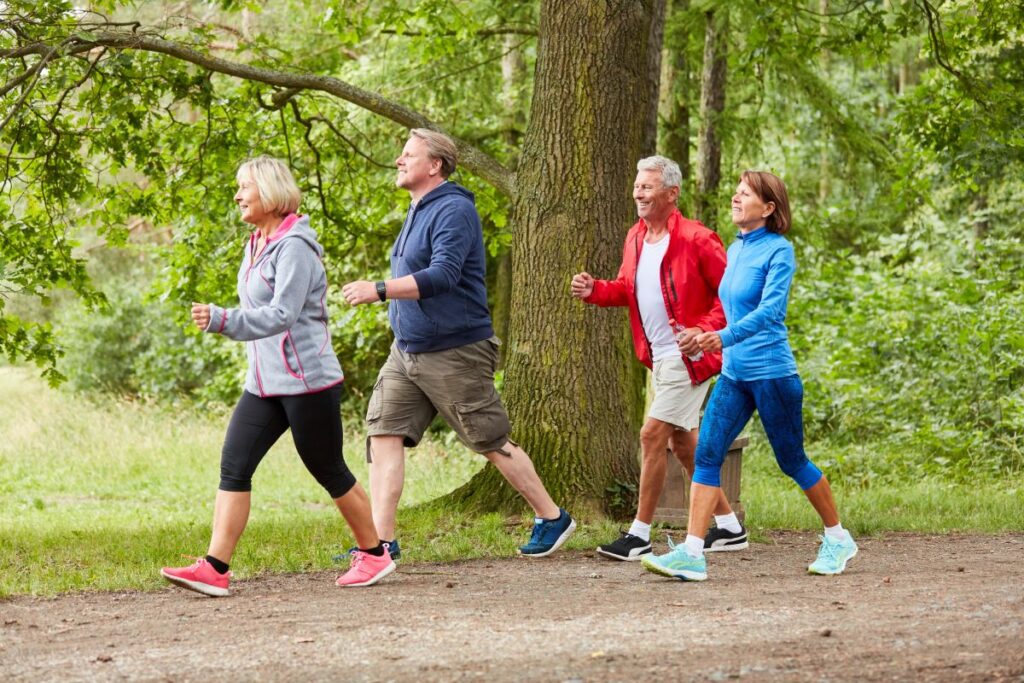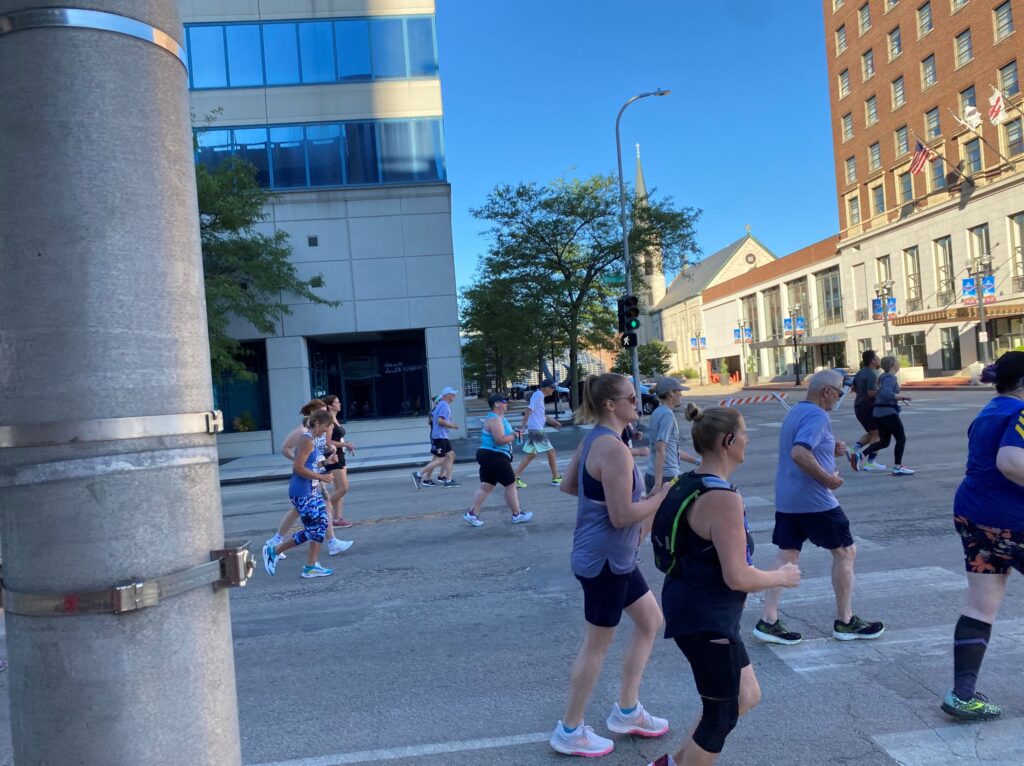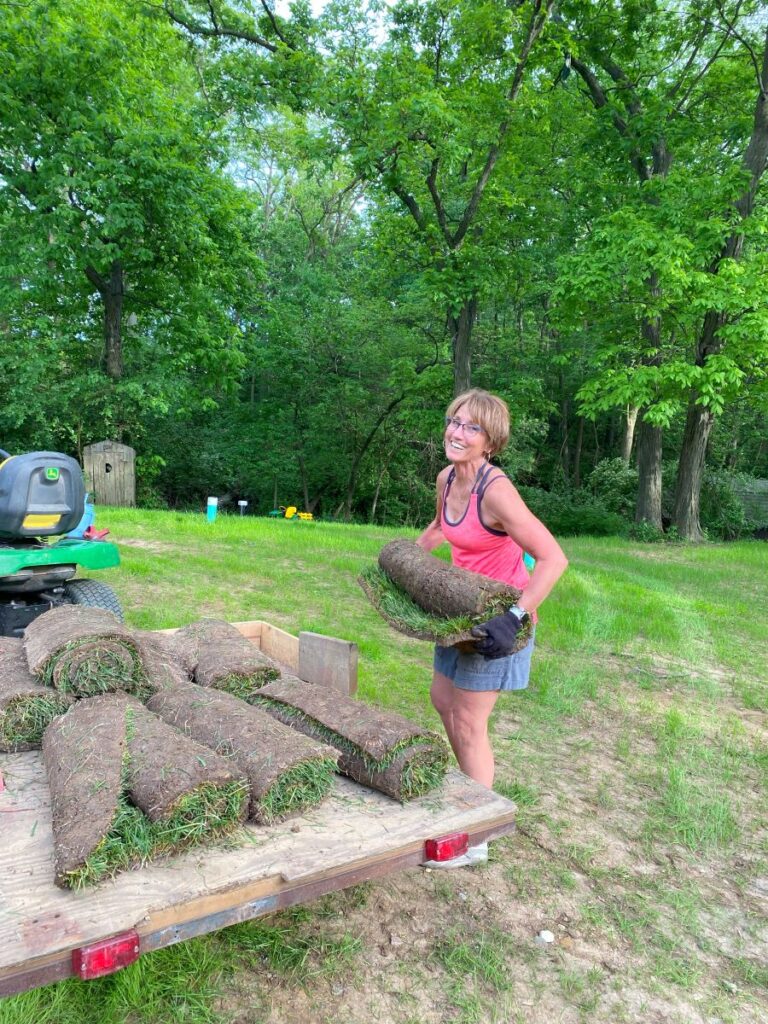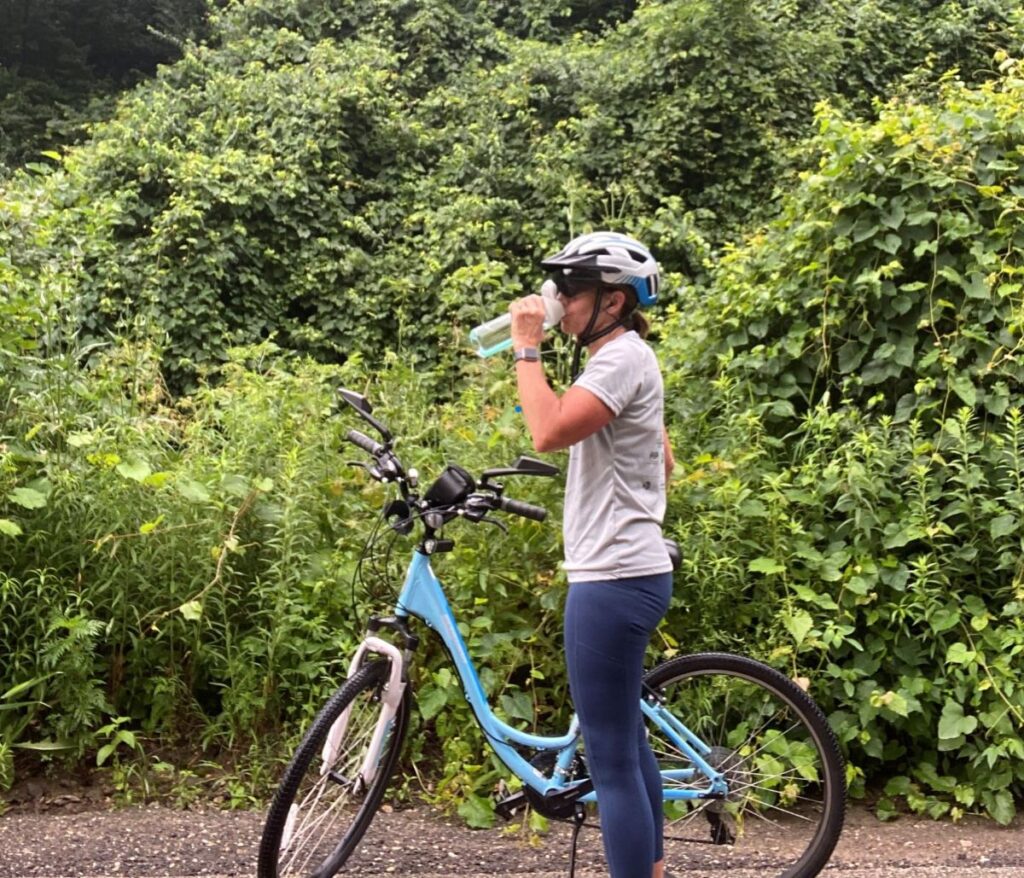Endurance Exercises for Older Adults: Best Way to Stay Healthy and Active
Updated: 7/5/24
Okay show of hands – how many people have noticed a decline in endurance as they have gotten older?
ME – I have – and I’m pretty sure that I’m in with the majority of women 60+ on this one.
However, my brain is sometimes unaware of this.
My brain will say “oh yeah you can do this” but my body says, “not a chance in hell sista”!
So, how do we get our body to catch up with our mind?
Sitting on the couch isn’t the answer, that’s for sure.
Instead, we need to build up our endurance with aerobic exercise AKA cardio and endurance exercises.
This can be any physical activity that increases your breathing, heart rate, and oxygen consumption for an extended period of time.
So, if you’re ready to boost your energy and improve your stamina so you can kick ass again, stick around.
I’ll share effective tips to make it work for you.
This post may contain affiliate links. As an Amazon Associate, I earn from qualifying purchases. This means I may earn a commission at no extra cost to you should you choose to make a purchase using my link.

Importance of Endurance Exercises
Endurance exercises are extremely important for older adults.
According to Harvard Health, endurance exercises can improve heart and lung function, lower blood pressure, and decrease your risk of cardiovascular diseases.
They can also help women keep a healthy weight and increase bone density and muscle strength.
By doing regular endurance exercises, you can also improve your mental health, decreasing feelings of depression, anxiety, and stress.
READ MORE: Cardio Exercise – Harvard Health
8 of the Best Endurance Exercises for Women 60+
Here are some of my favorite endurance exercises:
Brisk Walking
Brisk walking is probably one of the easiest endurance exercises because it’s low-impact and easy to do.
It can be easily added to anyone’s everyday activities – walk to work, to the store, anywhere really.
There is no learning curve – we all know how to walk!
It can be done anywhere, anytime, and the only equipment you need is walking shoes.

Cycling
Cycling is another low-impact exercise that’s great for older adults.
You can feel like a kid again – but it can really get the ol’ heart rate up and you will be breathing hard!
It’s also easy on the joints and can be done inside or outside.
If you cycle outdoors, you can explore the out-of-the-way places and enjoy the fresh air.
READ MORE: Is Riding A Bike Easy When You Are 60? | Simply Aging Healthy

Swimming
Swimming is an excellent endurance exercise that’s easy on the joints and great for older women with any arthritis or joint pain.
It can be a full-body workout if you are doing water aerobics.
Then, of course, there are the mental benefits that come with swimming.

Hiking
Hiking can be adjusted to your personal fitness level.
It can be done at a high or low-intensity level.
You don’t have to climb Mount Everest!
You can hike in areas with mostly flat ground or up and down steeper hills in nature—this is my personal favorite.

Jogging
Jogging is a high-impact exercise so it’s a great option for older people who are in good physical condition.
It will definitely increase your heart rate!
Just be sure to start slowly and gradually increase the intensity to avoid injury.

Dancing
Oh yeah, you can get down with your bad self and break out your favorite dance move.
I do this daily!
You can join a dance class or just bust out a move in the privacy of your house.
Again, no special equipment is needed, you can wear tennis shoes or no shoes at all, your call.
Seriously, tell me that doing a little dance doesn’t put a smile on your face.
Strength Training Exercises
Resistance exercise is an awesome way to boost endurance, especially for women over 60.
It can be altered to any fitness level and can be done in the comfort of your home or at your gym.
It helps build strength, improves muscle tone, and increases your energy level.
By challenging your muscles with body weight, resistance bands or heavy or light weights, you’ll be able to up that muscle mass to go the extra mile.
So, if you want to stay strong and power through your daily activities, give resistance training a try!

Gardening and Yard Work
If you’re not into traditional cardio exercise, that’s okay.
The good news is that there are several other ways to get your heart rate up and increase your endurance.
Gardening and yard work, especially for long periods of time, can certainly get the job done.
Truly, there are days that I work harder in my yard than I do by taking a walk or getting on a treadmill.

Benefits of Endurance Exercises for Older Adults
Here are some of the benefits of endurance exercises for older people:
Improves Heart Health
Endurance exercises improve your lung and heart health, and circulatory system.
They help increase the amount of oxygen that the body can use and improves blood flow.
This can help reduce the risk of heart disease, stroke, and other cardiovascular diseases.
By doing regular cardio exercises it can lower blood pressure and cholesterol levels.
Boosts Mental Health
Endurance exercises can also boost mental health.
When you exercise, the body releases endorphins, which are natural painkillers that can also improve mood.
This helps decrease stress, anxiety, and depression.
If done regularly, it can also improve cognitive function and memory.
Improves Mobility
Cardio exercises can help improve balance, coordination, and flexibility., which can decrease your risk of falls and injuries.
Safety Measures
Here are some important safety tips to keep in mind before starting an endurance exercise program.
Check-in With Your Health Care Team
If you have any chronic conditions, you may want to discuss aerobic exercise with your healthcare team.
Most doctors will encourage you to go for it but may suggest some guidelines.
Start Slow
Don’t come out full force.
Start slow and increase the intensity and duration of the exercise as you become more comfortable.
Be sure to listen to your body and not push too hard too fast.
If you need an extra push, you may want to think about doing an exercise session or two with a personal trainer.
Hydrate
Hydrating is super important while doing endurance exercises.
You need to drink plenty of water before, during, and after the exercise to prevent dehydration.
Dehydration can lead to fatigue, dizziness, and other health problems.
READ MORE: 15 Easy Ways To Boost Water Intake For Older Adults | Simply Aging Healthy

Creating an Endurance Exercise Routine
Here are some tips to help create an endurance exercise routine that is both effective and enjoyable.
Setting Realistic Goals
I really can’t stress this enough.
It’s what will keep you coming back for more.
Focus on where your current fitness level is, if you have any health problems, and time constraints when setting goals.
Make goals specific and measurable.
Instead of setting a vague goal like “improve endurance,” set a specific goal like “increase walking distance by half of a mile over the next month.”
Then, when you reach your goal – celebrate the hell out of it!
READ MORE: Setting Cycling Goals For Beginners? Look No Further | Simply Aging Healthy
Shake it Up a Bit
You know what they say – variety is the spice of life.
It’s no different when it comes to endurance activities.
By changing it up, you can avoid boredom and working the same muscle group over and over again.
Different exercises work different muscles – so shake it up and try new things.
Endurance Exercise for the Win!
Endurance exercises are so important for women over 60.
30 minutes of activity every day is all you need.
Not only will it improve your cardiovascular health, but it will also give you strong muscles, flexibility, and better mental health, all very important things as we age.
By doing regular physical activity like walking, swimming, dancing, or cycling, we can remain the strong, independent, sexy women we are while enjoying a healthy lifestyle with increased energy levels!
So ladies, let’s lace up those sneakers, jump in the pool, or hop on that bike and keep moving for a healthier and happier you!
